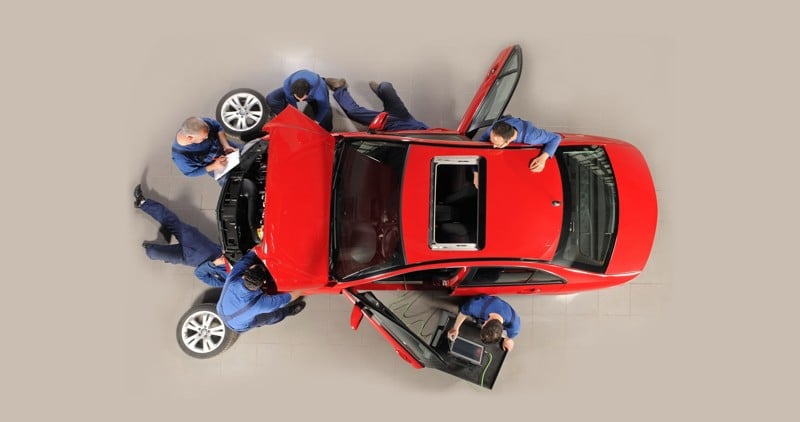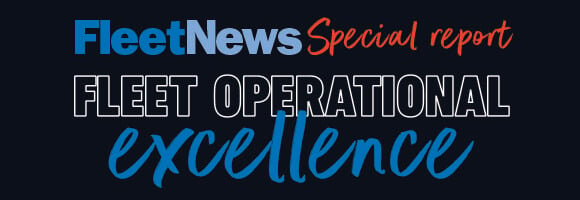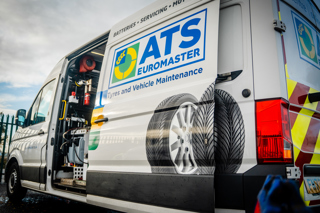This feature was taken from our special Fleet Operational Excellence report

The fleet sector has undergone some major changes in recent years, but the prime objective of an effective service, maintenance and repair (SMR) strategy has remained the same – to maximise vehicle uptime, increase safety and reduce costs.
However, this has become increasingly challenging due to the lasting effects of the Covid pandemic and the war in Ukraine, as well as new, emerging technologies.
“It is well known in the fleet sector that parts production has been hit in all kinds of ways in recent years and there has been a resulting marked impact on prices,” says Tim Meadows, chief commercial officer at Epyx.
“This has happened at a time when operators have been keeping hold of vehicles for longer, with many needing to buy more parts as a result.
“For example, few fleets would have needed new clutches when operating on a three-year replacement cycle, but for those that are keeping vehicles until four or five years old, the incidence of clutch issues is, unavoidably, higher.
“Just at the point when fleets have needed more parts, they have had to pay more for them.”
Taking data from its 1link Service Network, Epyx has found average fleet parts prices have risen by 35% in the past four years. Using a basket of common parts including front discs and pads, wiper blades, clutch, pollen filter, headlamp bulbs and spark plugs, the total cost has increased from £713 in 2020 to £963 in 2024.
The automotive aftermarket sector is also facing a skills shortage, with the Institute of the Motor Industry estimating it has about 23,000 vacancies, with a growing shortfall of electric vehicle (EV) technicians, mechanics and electricians.
This has led to longer lead times for SMR work. Fleet management solutions provider i247 Group reports these have stabilised this year, but remain higher than pre-Covid.
Impact of electrification
The transition to EVs has caused a seismic shift in SMR. Conventional wisdom is that, due to a significantly lower number of moving parts, SMR costs for a battery electric vehicle (BEV) will be much lower than for an internal combustion engine (ICE) one and, so far, this has proved true, says Vincent St Claire, managing director of Fleet Assist.
He adds: “However, the full picture of BEV SMR budgets is still not known as we are only now starting to cover similar mileages to ICE vehicles across a similar age profile.
“As the number of BEVs in operation increases, we are continually evaluating when job volume parity will be reached between the drivetrains.
“With the slowdown of BEV registrations, we have reforecast the date when this will occur back by nine months to early 2026.
“This is a key reference point due to the difference in the commercial make-up of the jobs.
"It is envisaged that at this point a paradigm change in fee structure may be required to ensure that the SMR services fleets expect such as delivery and collection and courtesy vehicles will continue to be provided.”
St Claire says another interesting developing trend is the type of work booked when comparing BEV with ICE.
The percentage of basic services for BEVs is higher with 70% of bookings. However, anecdotally, BEVs do seem to have more warranty work being undertaken.
“This does not suggest BEVs have build quality issues,” adds St Claire. “This trend could be driven by these vehicles typically having more complex systems and the latest leading-edge software which appear more vulnerable in this respect with 7% of jobs being warranty work.”
Proactive SMR management
Although many of the events which have affected SMR are out of their control, there are several actions a fleet decision-maker can take to improve performance in this area.
The first is to proactively manage SMR, says i247 Group. “Keeping vehicles to their recommended maintenance schedules will reduce the hidden second line costs from vehicle downtime,” says Steve Thornton, commercial director at i247.
“A fleet decision-maker should also maximise their data to better understand their SMR needs.
“Take the time to really understand your fleet data – from tyre wear to driver behaviour – because it will help optimise your SMR strategy and budget.”
This data could come from technologies such as telematics or connected vehicles, so is important to ensure a fleet’s supply chain can support this.
“Monitor innovation in the sector and understand how advances with connectivity could help support your fleet as well as your financial and environmental, social and governance (ESG) goals,” adds Thornton.
Another development which could affect the future of SMR is the array of connected vehicle solutions either provided by OEMs or aggregators with the promise of predictive maintenance.
“When considering telematics and connected vehicle feeds it is important to understand what your options are by asking questions such as: Do you have vehicles on your fleet that already have this option? Do you require a combined view or is a separate view by OEM OK?” says St Claire.
“What about consistency of data across your variety of fleet vehicles? Costs of provision? And, lastly and most importantly, how are you going to use the data? Can the data be used for predictive maintenance, or should you just start with a basic point of advising you when a warning indicator or service interval has been notified?
“It is likely that in the short-term, artificial intelligence (AI) combined with more relevant and easier access to telematics, data access costs and a widening variety of job administration systems could drive up the investment and operating costs for both fleets and garages.
“However, there is a bigger prize. The long-term outlook is very exciting and extremely promising with two key technology levers being proactive maintenance and AI-driven diagnostics. These, coupled with smart garage parts inventory systems, could deliver the holy grail.”
Driver education
One of the best ways to reduce downtime and costs attributable to SMR is to reduce the need for repairs caused by excess vehicle wear and tear.
“Driver education is key to optimal SMR management,” says Steve Thornton, of i247. “Educating drivers on everything from the importance of booking in for services on time, to checking tyre pressures and smooth driving patterns will have a significant impact on fleet efficiency and the SMR budget.”
This education has become more important in recent years with the advent of new technologies being adopted on even the lower cost models, including BEVs as many company car drivers may be driving a zero-emission model for the first time, says Vincent St Claire, of Fleet Assist.
“A lack of knowledge and education of how to drive and charge it may cause unnecessary visits to their local garage which someone will have to pay for,” he adds.
“Make sure your drivers are aware of continuing challenges in the aftersales SMR arena such as extended lead times and a restricted number of courtesy cars being available.
“Therefore, booking their vehicle in for service far enough in advance is advisable to avoid disappointment and a vehicle missing its scheduled service.”
Boost efficiency, cut costs and improve compliance across all areas of your business with the Fleet News Operational Excellence report.
Delve into crucial topics for effective fleet management, including electrification, digitalisation, alternative funding, and compliance. To give you an edge, we've gathered insights from top industry experts who reveal their best practices and innovative strategies.
Dive into these highlights and read the full report to unlock the secrets of running a more efficient and effective fleet operation.
























Login to comment
Comments
No comments have been made yet.